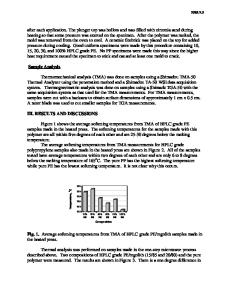Nanomaterials for radiation shielding
- PDF / 554,928 Bytes
- 6 Pages / 585 x 783 pts Page_size
- 49 Downloads / 457 Views
The space radiation environment The space environment contains major hazards to space travel, among which are space radiation and micrometeoroids, as depicted in Figure 1. Space radiation consists mainly of electrons and protons, solar particle events (SPEs), and galactic cosmic radiation (GCR). SPEs are events containing a very high number (per unit time) of high-energy charged particles coming from the Sun. They can originate either from a solarflare site or by shock waves associated with coronal mass ejections. The GCR consists of high-energy charged particles originating in outer space from the supernovae of massive stars and active galactic nuclei. It strikes the Moon, Mars, asteroids, and spacecraft from all directions and is always present as background radiation. The GCR is composed primarily of nuclei (fully ionized atoms) plus a small contribution (∼2%) from electrons and positrons.1 There is a small but significant component of GCR particles with high atomic number (Z > 10) and high energy (E > 100 GeV).1 These high-atomicnumber, high-energy (HZE) ion particles comprise only 1–2% of the total GCR fluence, but they interact with very high specific ionizations and thus contribute about 50% of the longterm space radiation dose in humans.2 These GCR particles,
which are primarily positively charged, interact with materials mainly through Coulomb interactions with the negative electrons and positive nuclei in the materials and, to a much smaller extent, through collisions with atomic nuclei in the materials. Additional radiation hazards come from neutrons and γ-rays produced in nuclear collisions and from x-rays arising after Coulomb interactions. Neutrons are produced as secondaries when the GCR and SPE interact with the walls and contents of space structures (vehicles, landers, habitats, or spacesuits). Secondary neutrons are also produced when the GCR and SPE interact with the surfaces of Mars, the moon, and asteroids (Figure 1). Figure 2 displays the calculated results for secondaries produced when primary GCR interacts with the lunar regolith (the layer of unconsolidated rocky material covering the bedrock).3 Figure 2 shows some of the species that are present in the lunar environment. Note that, whereas neutrons are not present in the primary radiation (GCR and SPEs), on the Moon, Mars, and asteroid surfaces, a significant neutron flux gets produced when the GCR and SPEs interact with the surfaces. This secondary neutron radiation has largely been ignored
Sheila A. Thibeault, Advanced Materials and Processing Branch, NASA Langley Research Center, USA; [email protected] Jin Ho Kang, National Institute of Aerospace, USA; [email protected] Godfrey Sauti, National Institute of Aerospace, USA; [email protected] Cheol Park, Advanced Materials and Processing Branch, NASA Langley Research Center, USA; [email protected] Catharine C. Fay, NASA Langley Research Center, USA; [email protected] Glen C. King, Advanced Materials and Processing Branch, NASA Langley Research Center, USA; glen.c.
Data Loading...











